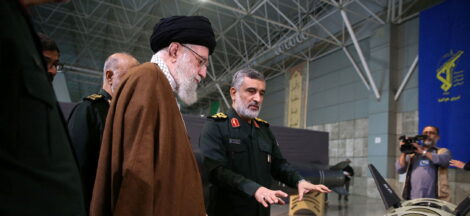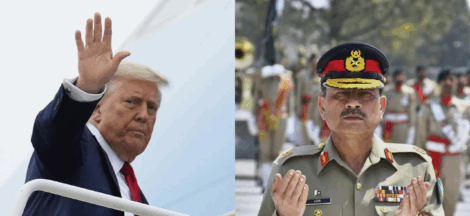By Tarun, Anamika Shukla
June 3, 2025 marks the end of an eighteen year wait for Royal Challengers Bengaluru (‘RCB’) to be crowned champions of Indian Premier League (‘IPL’) 2025. On June 4, an open bus victory was organised by the RCB management, DNA Event Management and the Karnataka State Cricket Association (‘KSCA’), like championship style rallies in football, or the massive rally by the American football team Chicago Bulls in 2023, was organised at the M. Chinnaswamy stadium in Bengaluru. The event, organised at the home turf of RCB, was to felicitate the players and thank the fans for their support.
However, what was meant to be a moment of pride and celebration turned into a massive tragedy resulting in a stampede that resulted in deaths of eleven individuals and injuries to over fifty others. Following the incident, a judicial inquiry led by former Karnataka High Court judge, Justice Michael D’Cunha was initiated. A First Information Report (FIR) was filed against the organisers for criminal negligence, and the Karnataka Police has made several arrests.
On June 13, Nikhil Sosale, RCB’s head of marketing & revenue, who was arrested in the matter, was granted interim bail by the Karnataka High Court. Sosale’s lawyer argued that the arrest was made without proper investigation and lacked evidentiary backing. On the grounds of moral responsibility, two senior KSCA officials, E.S. Jairam (treasurer) and A. Shankar (Secretary) resigned from their positions.
The tragedy points to systemic fractures that allowed the organisation of the event without proper clearance from the police, and metro services suspended at two key stations. These organisational lapses and logistical oversights highlight the administrative incapacities of the government, enforcement agencies and event organisers to manage such large-scale events. These failures have reignited discussions about the urgent need for a codified Standard Operating Procedure (‘SOP’) to prevent such tragedies in the future.
Globally, a number of jurisdictions have made effective attempts to provide legal and administrative measures to curb mismanagement and ensure the safety of spectators at large sporting events. One of the most defining moments in this context is the 1989 Hillsborough disaster in the United Kingdom (UK) which provides for a learning arc to enforcement agencies worldwide. Administrative and legal lapses led to the multiple deaths in the incident and subsequently, based on a consequential Taylor Report, recommendations regarding stadium audits and standards, and legal liability of clubs and local authorities were introduced along with the Football Spectators Act, 1989.
The 1989 Act controls the admission of spectators at football matches in the UK and attempts to create a safe environment and experience for them. The Taylor Report highlighted institutional failures and criticised the police for attempting to deflect blame onto fans by labelling the incident as “fan hooliganism”, a narrative that upends in similar situations globally. The UK Safety of Sports Ground Act, 1975 and the Green Guide are a few other steps taken to create a safe landscape at large-scale sporting events for the spectators.
Another model worth considering is offered by Germany which has crafted guidelines to manage huge fan gatherings, especially in football matches. The 2018 Stadium Ban decision (Stadionverbots) by the German Federal Constitutional Court (Bundesverfassungsgericht) is an example of allowing legal interventions in regulating fan behaviour at the time of sporting events. It underscores the role of constitutional safeguards and due process even in disciplinary actions by private sports entities.
At the team level too, proper safety measures are taken into consideration for giving fans the best experience possible. Teams like Manchester City, Real Madrid and Argentina Men’s National Football Team and others in collaboration with local authorities come out with guidelines and victory parade routes for a smooth conduction of the event. Proper medical support is provided for any on-site incident and the organisation ensures that the general public commute is not disturbed. This necessitates balancing celebration with civic responsibility.
A cogent need and a clear absence of any dedicated legislation or protocol for managing mass fan gatherings at multiple events has been felt in India time and again. The Disaster Management Act, 2005 can act as a guiding piece of legislation but it primarily addresses natural calamities and lacks event-specific guidelines. The lack of any legally binding SOPs or licensing requirements for organisers of high-density public events leaves a dangerous vacuum in law and policy.
The RCB victory parade tragedy should prompt lawmakers and sports administrators to create a national level framework for mass public events. Unfortunately, this is not a lone call for regulation. Similar incidents like the stampede at the recently concluded Maha Kumbh of 2025 and at the screening of the film Pushpa 2 in Hyderabad, stress the urgency of systemic legal and policy interventions.
On June 14, the Board of Control for Cricket in India appointed a committee to establish guidelines to counter incidents like the stampede outside the Chinnaswamy stadium. The committee, comprising BCCI’s secretary Devajit Saikia, vice-president Rajiv Shukla and treasurer Prabhtej Singh Bhatia, will put together the guidelines by the end of June 2025.
Though a very positive step, a national-level framework must be developed to regulate the organisation of mass public events. Key components of such a framework should include mandatory event safety licensing. Additionally, use of technology should be promoted including real-time crowd tracking, geo-fencing, and digital ticketing systems to prevent overcrowding. Another feature of the suggested framework should be provision for accountability checklists for organisers, enforcement agencies and municipal bodies respectively. Risk assessment is extremely critical in such scenarios and a balance needs to be made between fan engagement and the capability to manage that fan engagement.
The need of the hour is to operationalise tools that can evaluate venue capacity, assist in exit route planning, and aid emergency response preparedness. Fan education and proper pre-event communication also plays a vital role. India can also draw on international models such as the fan safety education initiatives designed by Football Supporters Europe (‘FSE’) and Global Crowd Management Alliance that pivot on collaborative planning and participatory safety measures.
In the age where sports is becoming a mass spectacle in India, celebrations must not be left to ad hoc planning. The law must evolve to appreciate and recognise responsibility of all stakeholders for not just preserving the spirit of the sport, but also the sanctity of human life. (IPA Service)
Courtesy: The Leaflet




 The Capitalist Social Order Has Always Been Based On Subjugation And Violence
The Capitalist Social Order Has Always Been Based On Subjugation And Violence 